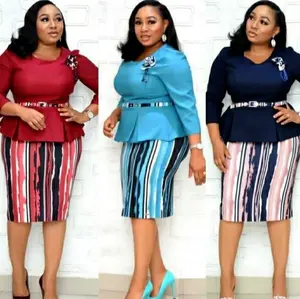
African fashion is a vibrant and diverse tapestry, reflecting the rich cultural heritage of the continent. Traditional garments like the dashiki and kaftan, alongside modern African print clothing, showcase a unique style deeply rooted in the myriad cultures, languages, and natural landscapes of Africa. These styles are often characterized by their use of bold patterns, bright colors, and intricate designs, drawing inspiration from Africa's wildlife, nature, and music.
The continent's fashion is not static; it incorporates global trends while maintaining its distinctive aesthetic. Florals and bright colors are a staple, reinterpreted through African sensibilities to create garments that are both bold and beautiful. The use of animal prints in men's fashion, for instance, exudes confidence and pairs well with the vivid hues that are synonymous with African attire.
African womenswear has seen the resurgence of big sleeves, adding a dramatic flair to dresses and blouses. Off-the-shoulder designs and side slits in garments offer a blend of allure and sophistication, while adapted kimonos add a comfortable yet stylish layer to any outfit.
In menswear, the trend of colorful suits reflects a shift towards more casual, yet eye-catching attire. Traditional garments are celebrated for their versatility, worn casually or for special occasions, often adorned with brocade embroidery that adds a touch of elegance.
The fusion of traditional and contemporary is also evident in the popularity of two-piece outfits and matching sets, which showcase African wax prints in coordinated ensembles. These trends not only highlight the dynamic nature of African fashion but also its readiness to make a statement on the global stage.




































 浙公网安备 33010002000092号
浙公网安备 33010002000092号 浙B2-20120091-4
浙B2-20120091-4